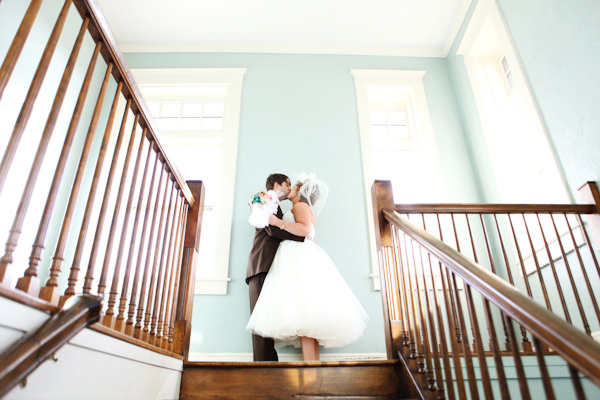1. Shoot during the golden hour (before sunset)
They say the best natural light is the kind you'll find about 30 min. before sunset and after sunrise. This is the time when shadows are low and the light is soft. Anytime you shoot in this timeframe you'll find that colors are more vivid and details stand out more. The most significant trait of the golden hour is the warm, golden light being produced by sunset. In the summer you'll find it is even more golden. The photo example above was taken at one of our family reunions at sunset.
2. Shoot during early morning (at sunrise)
Early morning light is just as beautiful as the golden hour but with it's own characteristics. Since you don't have the golden hues from the sunset, you'll find that early morning light has more clarity. The colors are more true and have a slightly bluer tone. Because of this, many nature photographers believe that first morning light is the best light. The next two photos were taken very early in the morning.
3. Use backlight
You'll need to know how to shoot in manual to get the most out of backlight, but this type of light creates those dreamy images of soft light in pictures. It's also how you create silhouettes. Photos taken with true backlight will have a soft, romantic look to them. Because of the way the light softens the image you won't get totally sharp images in backlight situations when exposing for your subject. However it's that dreamy look that we're going for when we shoot backlight so that's totally okay.
4. Turn off flash
Unless you're shooting with multiple flash set ups, direct single "on camera" flash is really unflattering for photos. If you're not shooting in manual and you turn off your camera's flash you will most likely find that you get really bad, blurry photos! This has to do with shutter speed and the camera is usually choosing a slow shutter speed to compensate for the lack of light. This is one of the big reasons why it's so important to learn how to shoot in manual. Being able to change a few settings manually and turning off flash can make a BIG difference in your photography.
On-camera, direct flash.
Same photo with manual settings and no flash.
5. Use a reflector
If you find that you're not getting enough natural light on your subject, you can consider using reflectors to bounce back more light. White foam core board is great as a simple, inexpensive reflector. You can also buy reflectors at camera stores (they usually have both silver and gold sides.) I very rarely carry around reflectors because I'm lazy and can't be bothered. Instead I like to look for natural reflectors like white walls and concrete. These natural reflectors will bounce back more of that great light and help add an extra sparkle to your subject.
The following two photos were shot with the use of a reflector...
6. Shoot with even shade
If you find yourself in a situation where the light is really bright and harsh, seek out even shade. Even shade is cast from buildings, carports, etc. Anytime you shoot in even shade you minimize shadows while retaining the nice depth of detail and colors in your subject. Even shade has a tendency to be blue in color tone, so you might have to warm up your photos some in editing.
7. Shoot with window light
Windows! Gotta love places with lots of windows. Since the light is diffused when it filters in through windows, indoor window light is really great light. This is especially a great option if it's the middle of the day and the light is just harsh or if it's really too hot or too cold to comfortably shoot outside. You'll find that if you're at place with lots of windows (like an greenhouse type room at an aquarium) the pictures you can capture in that area will be even better than those where you had to shoot in just artificial light. So seek out window light - it's a great pretty light.
8. Shoot the seasons
Pretty light changes with the seasons and there's no better way to explore that light than with the seasons. Each season has it's own color tone, simply because of the natural colors at the time. If you're shooting in the fall and there's an abundant amount of gold, red, and orange leaves... yes you're photos will naturally have a golden color tone. Spring brings lots of new flowers and tender green grass, so we find that the colors of spring are crisp and pure. Summer has a lot of golden / green tones (depending on where you live) and winter mostly has more blue tones. Try shooting the same location throughout the seasons to see how the light changes.
So the next time you're out and about, try shooting just after sunrise, during the golden hour, shoot with window light, look for even shade and even use reflectors. Start a series of shooting the seasons, try shooting with backlight and turning off that flash.

























